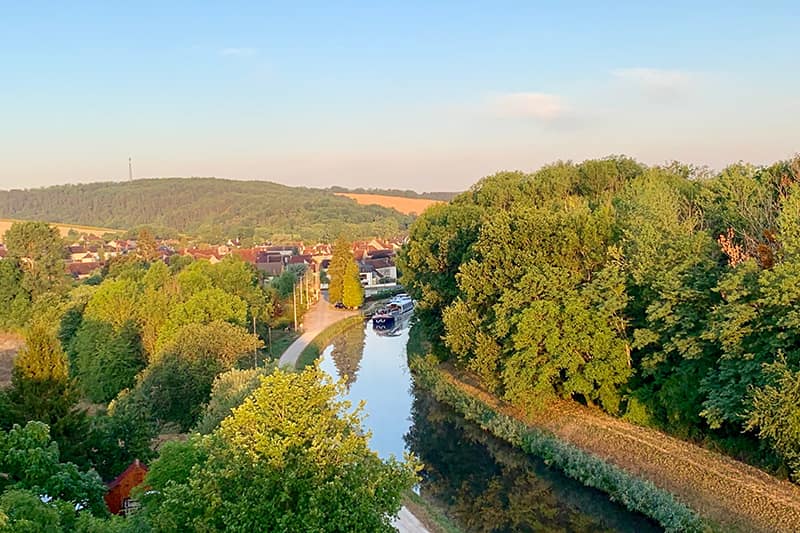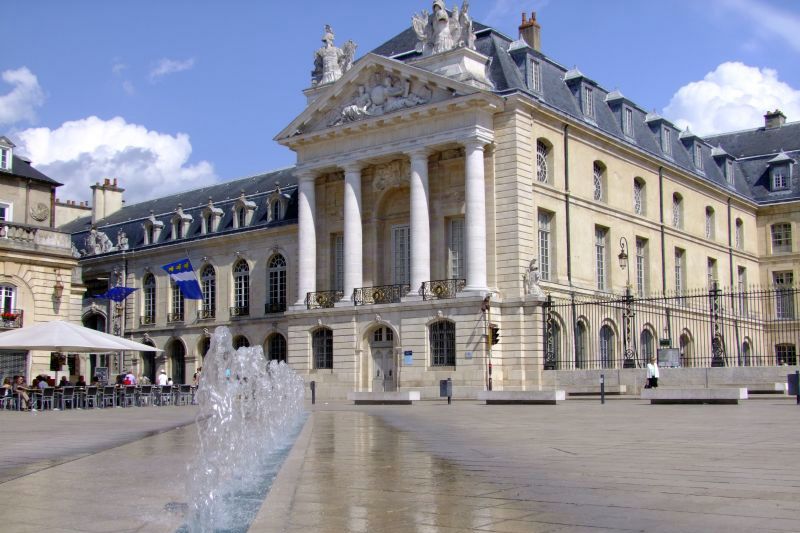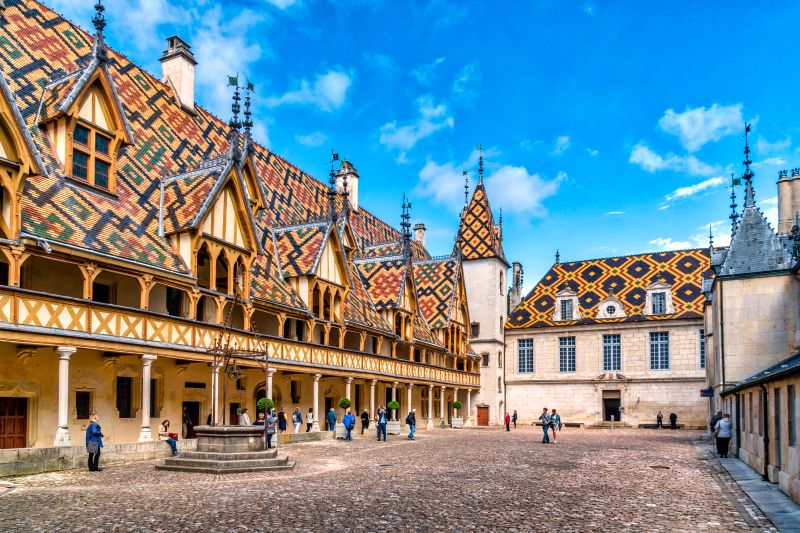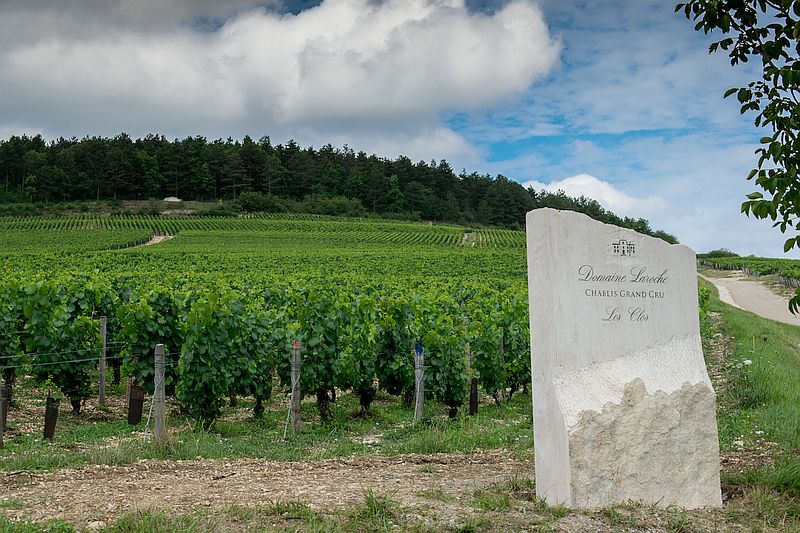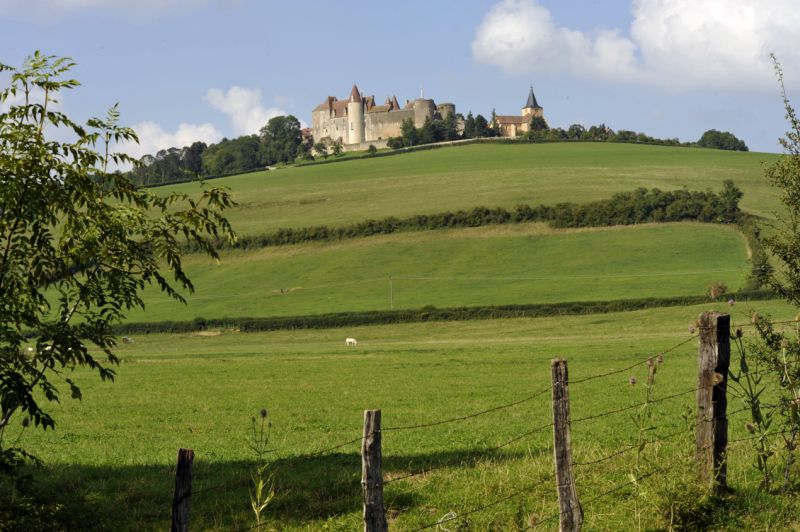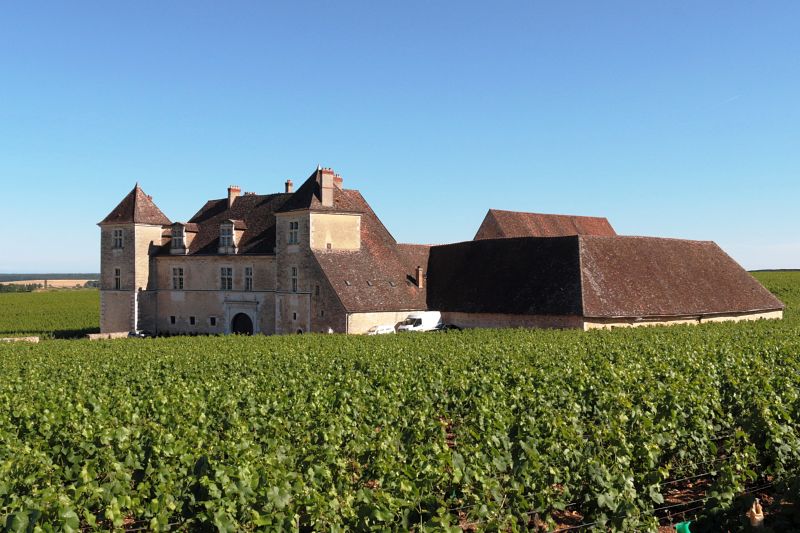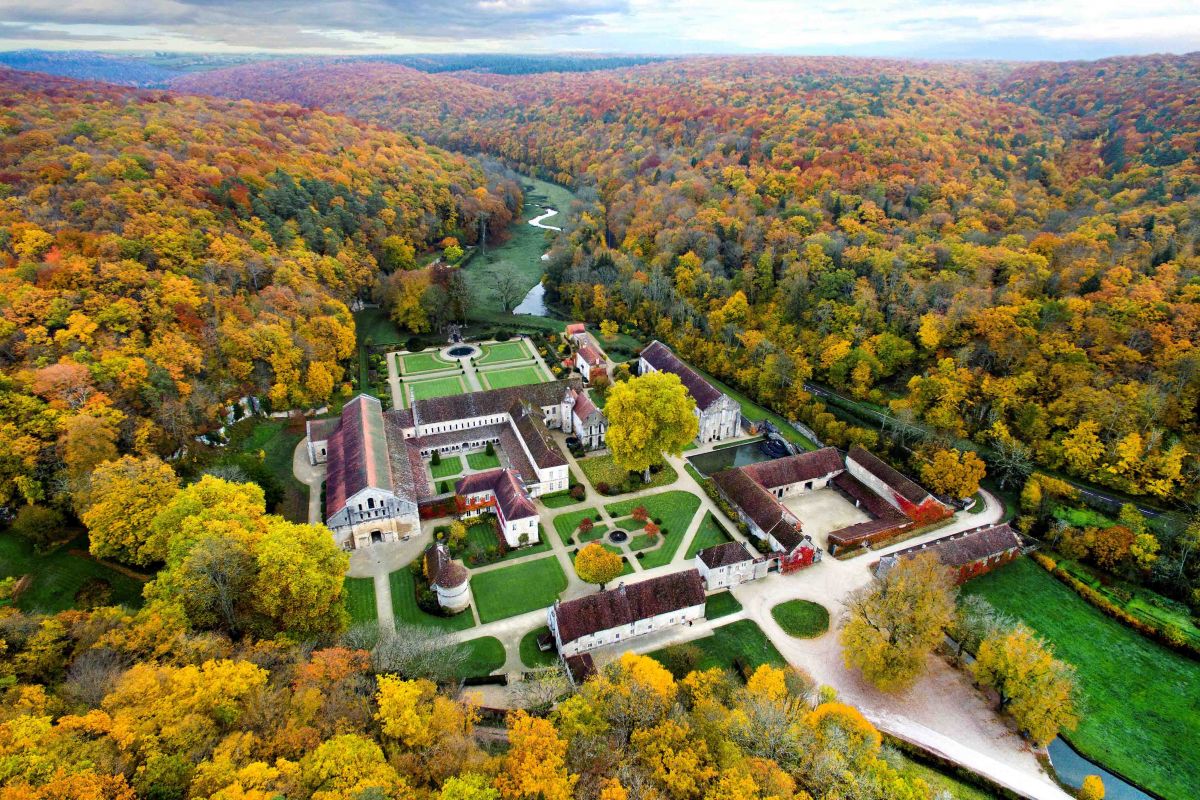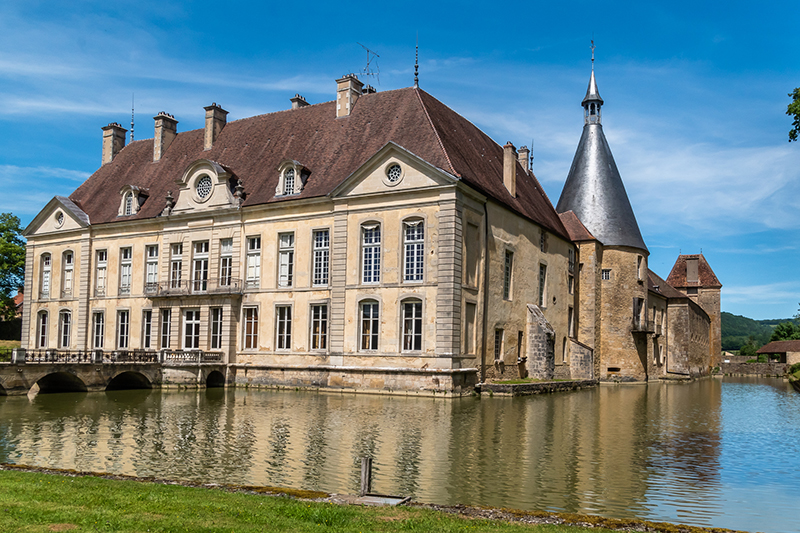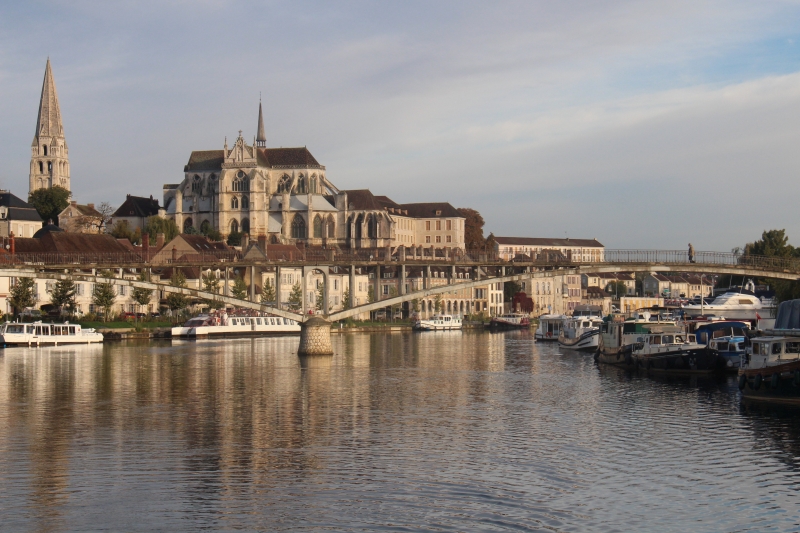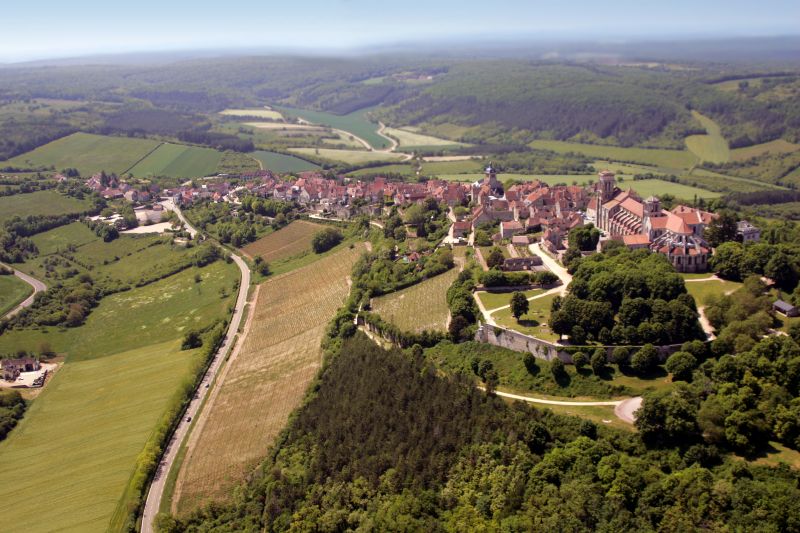Dijon
Perhaps you have heard of Dijon for its mustard? Well, the Burgundy town of Dijon offers more than just excellent condiments! With its position at the centre of the Côte d’Or region, the ancient Roman town of Dijon was the capital of Burgundy in the 14th and 15th centuries. The wealthy historic city was traditionally home to the Dukes of Burgundy and was known as a centre for art, learning, and science during the 11th and 15th centuries.
Famous for its polychromatic tiled roofs in yellow green and black, this Burgundian city’s tightly packed town houses leave visitors weaving through narrow streets to discover its famous museums and galleries. The most popular destination of all is the Ducal Palace, which is home to the Musée de Beaux-Arts, its gallery exhibiting a substantial collection of European art. Other Dijon landmarks visitors shouldn’t miss include the Parliament Building and gothic Cathedral of St-Bénigne, with its medieval crypt.
⇒ Visit Dijon aboard hotel barges L’Impressionniste & Finesse
Beaune
Beaune is arguably the most attractive town in the whole of Burgundy. First inhabited by the French Gauls, it later became a Roman town, though is now remembered as one of the best-preserved medieval cities in the Burgundy region France. As a residence of the Ducs de Bourgogne throughout the medieval period, it was taken over by Louis XI in 1477 to unify France.
Celebrated for its wine production, Beaune is now a mecca for wine lovers. Visitors shouldn’t miss an opportunity to visit the Hôtel-Dieu de Beaune, with its gothic fairy tale architecture, featuring spired dormer windows and bright, patterned roofs. This hospice for the poor was founded by Nicolas Robin, who sought to provide Christian charity for the citizens of Burgundy. In the fifteenth century, the alms-house was gifted vineyards, and the premier crus and grands crus produced there have been auctioned to raise money for the Hôtel-Dieu de Beaune ever since.
⇒ Visit Beaune aboard hotel barges L’Impressionniste & Finesse
Chablis
Known as the ‘Golden Gate’ of Burgundy, Chablis is of course, most famous for its white wines. Wine production began in Roman times but wasn’t perfected until the 1400s, when Chablis started transporting its wines to Paris via the River Yonne. The Chablis region of Burgundy contains an enormous 5500 hectares of vineyards that are exclusively planted with the chardonnay grape. It makes for an ideal location to book into a wine-tasting!
The pretty Burgundian village of Chablis is well worth a visit. Located on the banks of the River Serein, it is entered through turreted towers at Porte Noël gateway. The village opens into narrow stone streets lined with medieval houses. Explore the town to get a glimpse of the collegiate church of St Martin, former monastery; Maison de l’Obédiencerie, and the nine-arched washhouse on the river.
⇒ Visit Chablis aboard hotel barges L’Art de Vivre & La Belle Epoque
Châteauneuf-en-Auxois
Châteauneuf-en-Auxois is a charming hilltop town in rural Burgundy. Views of the gorgeous French countryside make it well worth climbing the steep, winding path to the top of the hill. Situated between Autun and Dijon, this romantic village held a strategic position between the larger towns. Châteauneuf-en-Auxois’s turreted castle, encircling walls and elegant houses provide proof its historical military significance and wealth.
The imposing Château de Châteauneuf was built in the medieval period and has now been designated as a protected historical monument. Seen for miles around from the surrounding Burgundy landscapes, the fortress affords views of rolling farmland, the picturesque Canal de Bourgogne and the forests of the mountainous region of Morvan.
⇒ Visit Châteauneuf-en-Auxois aboard hotel barge L’Impressionniste
Clos de Vougeot
Clos de Vougeot is one of the largest and most exclusive vineyards in Burgundy. Designated a UNESCO world heritage site, its central château surveys the rolling terroirs of vines that surround it. Founded by Cistercian monks from the nearby Abbey of Cîteaux, the fifty hectares of vineyards are at the heart of the Cote de Nuit region and are enclosed by historic walls. Visitors to the region should take advantage of a wine-tasting at the vineyard to experience the flavours of its prestigious Pinot Noirs.
A large 14th century barn on the Clos de Vougeot estate houses four wooden grape presses and several huge storage vats. Originally built to produce wine for the religious ceremonies of the monks, the barn can store up to 2000 casks of wine! In the sixteenth century, the château replaced the Cistercian chapel to provide comfortable living quarters for the family who bought the vineyard. Clos de Vougeot is now the seat of Burgundy’s world-renowned wine-loving community, the Chevaliers du Tastevin.
⇒ Visit Clos de Vougeot aboard hotel barges L’Impressionniste & Finesse
Abbey at Fontenay
The sprawling Cistercian Abbey at Fontenay is situated near the city of Montbard in the Côte-d’Or region of Burgundy, France. Founded by St Bernard in 1118, it is the oldest Cistercian abbey in the world. Now a world heritage site, it is best known for its simple, austere style and basic architecture. Visitors can observe the Romanesque style abbey church, cloister, dormitory, forge and other buildings as they explore.
The survival of Fontenay Abbey can probably be attributed to the site’s remote position at the bottom of a quaint valley, that extends for over 1200 hectares. Ravaged and abandoned during the French Revolution, the Abbey has been painstakingly restored to give visitors a realistic impression of life at a Cistercian abbey. Fontenay’s remarkable landscaped gardens can also be peacefully enjoyed within the spiritual setting they were intended for.
⇒ Visit Abbey at Fontenay aboard hotel barge La Belle Epoque
Château de Commarin
The grand medieval Château de Commarin is an example of a classic French castle. With its turreted façade, elegant moat, and vaulted chapel, it combines the features of classic fairy-tale châteaux with the luxurious French palaces of the seventeenth century. Visitors to this Burgundy castle can cross its overstated moat via a six-arched bridge and enter a courtyard surrounded by walls in a horseshoe shape.
Having been owned by the same family for more than seven centuries, this once fortified castle was originally built in 1346, but was transformed in the 1600s and improved again in 1702. Furnished with parquet floors and magnificent tapestries, it survived the French Revolution untouched. Despite its occupation by German troops in the Second World War, Château de Commarin is in an excellent state of preservation, with its fourteenth century towers and chapel still intact.
⇒ Visit Château de Commarin aboard hotel barges L’Impressionniste & La Belle Epoque
Auxerre
Visiting Auxerre is like stepping back in time. The protected Old Town is filled with Medieval timber-framed buildings flaunting dormer-windows, that open into cobbled squares and streets. This Burgundy town’s clock tower was built in the fifteenth century and contains a mechanism that has worked since 1483! Visitors who enjoy their history can wander the crypts, cloisters and church of the Carolingian abbey of Auxerre. Founded in the 5th century, Saint-Germain Abbey contains the oldest murals in France.
The historic city of Auxerre links the River Yonne to the Canal du Nivernais, which was built in the late eighteenth century to transport firewood. As a result, one of Auxerre’s most picturesque features is a pleasant port, lined with elegant buildings that overlook the waterfront. The town’s important position within Burgundy made it a cultural centre that is well-known for its excellent gastronomy and wine.
⇒ Visit Château de Commarin aboard hotel barges L’Art de Vivre
Vézelay
Situated at the highest point for many miles, the historic town of Vézelay enjoys vistas of rural French countryside, rolling valleys and forests. Founded by the Duke of Burgundy in 771, its Benedictine Abbey is rumoured to have held the remains of Mary Magdalene herself. As a prominent Christian pilgrimage site, Vézelay has close links to the second and third crusades. The Church of St Mary Magdalene displays some of the most remarkable 12th century gothic architecture ever to be seen.
Though the Benedictine abbey of Vézelay has long since been destroyed, its church has remained. Occupying a position on top of the ‘eternal hill’, the Burgundian town of Vézelay has been built around it. Walk its medieval streets to discover inlaid shells between the cobbles, placed there by the thousands of visiting pilgrims passing through. Filled with gift shops, galleries and cafes, Vézelay provides the perfect place to pause for contemplation on your trip through Burgundy, France.
⇒ Visit Château de Commarin aboard hotel barges L’Art de Vivre
Château de Tanlay
Built in the 16th and 17th centuries, Château de Tanlay is one of the finest castles in Burgundy. Built in a horseshoe formation around a central courtyard, its cupola-topped towers survey the surrounding hectares of parkland. Encircled by a grand moat, its walls conceal a series of arcades and iron grills. Château de Tanlay features an extravagantly decorated Renaissance interior, boasting frescoes and trompe-l’oeils that give the illusion of the rooms being even bigger than they are!
Owned by the Count of La Chauvinière, Château de Tanlay has descended through the same family since it was built in the 1550s. This Burgundy château is actually made up of two separate castles; the ‘petit château’, built in the 16th century, and the 17th century ‘grand château’. Its landscaped gardens are bordered by an ornamental canal, which allows for peaceful walks with fabulous views of the castle and park.
 English
English
 Spanish
Spanish French
French German
German Norwegian
Norwegian Portuguese
Portuguese Swedish
Swedish Italian
Italian Russian
Russian Simplified Chinese
Simplified Chinese Japanese
Japanese
